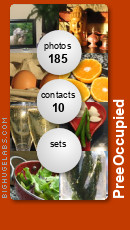It was the 1980s. Kashmir was still peaceful. And middle-class Bengali families chose it over Shimla and Dehradun as a great summer holiday getaway. We did too. It was a great family vacation, with the extended family joining in as well. Uncles, aunts, cousins and an annoying toddler sibling.
As a six-year-old, I was the hip, corduroy-clad tomboy. At two, my sister was a social embarrassment for me. I wouldn’t touch her with her pole. And she somehow thought spending time with me was her only goal in life.
Sibling revelry apart. My memories of Kashmir from that trip of ours is pretty vivid. Lush green valleys of Gulmarg, the narrow, rapid, murmuring brooks, the innumerous pony rides, the luscious roses and dahlias of the Shalimar Bagh. And when we were not enjoying all the scenic beauty or shopping for jackets, mittens, pullovers, and chinar leaf bedspreads, we were busy eating apples and walnuts after a marathon session of apple picking at one of the local farms. A lot of our time was also spent in living in a quaint houseboat on the Dal Lake.
His name was Gulab. He was the houseboat owner. He would row his own shikara and come visit us, his guests every day. Making sure we were well looked after, bringing freshly cut lotuses for the women in my family. He would sit and chat over cigarettes and kahwa with my father and uncles. He always wore the traditional pheran over his jeans and carried a kangri to keep him warm.
Gulab smoked a lot of cigarettes. One time I saw him smoke five cigarettes all at the same time. He tuck each between his five fingers and smoked. I think he was showing off his smoking skills. But that did not deter my Mum and Aunts to become friendly with him. Apparently he was an awesome cook. And had promised the ladies he’d teach them some traditional Kashmiri dishes.
The kitchen of our houseboat was huge. There were attendants who would make us fresh meals every day. Everything was made of hardwood. I would love to tap loudly on the floor with my shoes just for the acoustics. Very unusual for a kid who never knew anything but concrete mosaic floors.

In that enormous kitchen, Gulab held his court with three women hastily taking notes. Two Kashmiri recipes in one day. This was a bumper for the Bengalis!

Ingredients for Gulab’s Gushtaba are:
1 kg goat mince meat (ask your butcher to mince some fat with the meat)
Handful of fresh mint leaves
500 grams plain yogurt
1 medium red onion, finely chopped
2 tablespoons fennel powder
1 teaspoon fennel seeds
1 tablespoon Kashmiri red chili powder
1 tablespoon coriander powder
1 tablespoon + half teaspoon freshly ground black pepper
1 teaspoon dry ginger powder
1 tablespoon + 1 teaspoon green cardamom powder
3-4 black cardamoms
1-2 sticks of cinnamon
3-4 green cardamoms
2-3 cloves
1-2 small barks of ratanjot (optional, traditionally a Gushtaba recipe does not use ratanjot)
One generous pinch of asafetida
1 teaspoon ghee/clarified butter
2-3 + 3-4 tablespoons Mustard oil
Salt


Start by pounding your mince meat. Add to the meat about 10 finely chopped mint leaves, 1 teaspoon fennel seeds, 1 teaspoon green cardamom powder, half teaspoon black pepper powder, 1 teaspoon ghee, and salt. Pound some more and make lemon-size meatballs and keep aside.


Heat water in a large pan and season it with salt, a couple of black and green cardamoms and a little drizzle of ghee. Bring the water and spices to a rumbling boil. Gently drop the meatballs one by one in the boiling water. Don’t overcrowd the pot. Release 4-5 meatballs at a time and cook for 3-4 minutes on high heat. Remove with a slotted spoon and keep.

For the one kilo mince meat that I used, I got about 20-22 meatballs made.

Let the stock/water from the meatballs cool down completely.
Meanwhile, shallow fry your chopped onions in 2-3 tablespoons mustard oil till they turn brown. Grind them into a smooth paste and keep.

In a wok, heat 3-4 tablespoons mustard oil, add to it the bark of ratanjot and let it color the oil.


Remove the barks with tongs and add the whole black and green cardamoms, cinnamon and cloves. Let them splutter for a few seconds. Add the asafetida. Next add the onion paste. Sauté on medium heat. Now add the red chili powder, coriander powder, black pepper powder, dry ginger powder, fennel powder, green cardamom powder and mix everything well. Let all the ingredients cook on low heat for 3-4 minutes. Turn the heat off and keep.

Whisk the yogurt in the water from the meatballs. Slowly add it to the onion and spice mixture you have prepared. Make sure everything has cooled down before you mix with one another. Else, the yogurt will curdle. Bring the yogurt and spice mixture to a roaring boil. Season with salt.

Release the meatballs in the runny yogurt gravy. Cook on high for about 8-10 minutes. Turn heat off. Do a taste test. Add more spices if your taste buds want a balance of flavors. I had to add more pepper powder and fennel powder.

Add finely chopped mint leaves to finish your Gushtaba. Serve warm with plain rice or chapatis. A salad is recommended for a complete meal.


Enjoy Gulab’s Gushtaba. That’s all I have left in my food memory from almost three decades ago.















































































